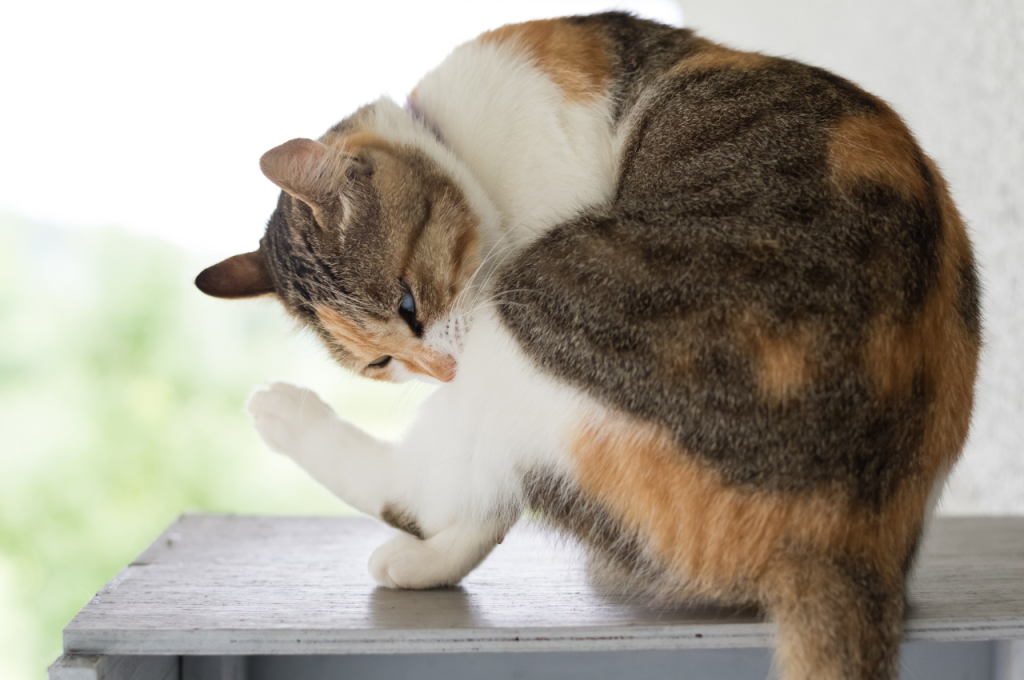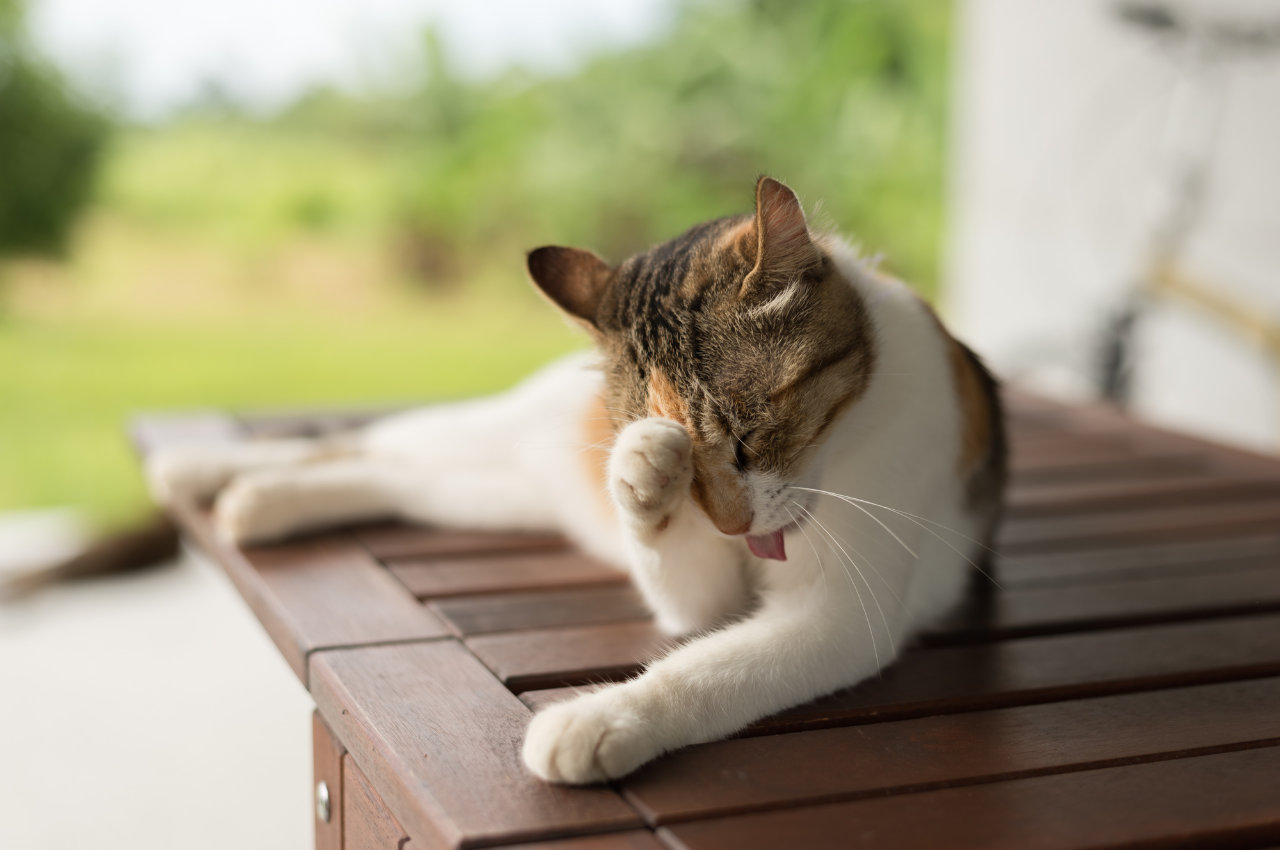Cat scratches itch due to bacteria on their claws irritating the skin, causing a histamine response. This reaction triggers itching.
Cat scratches can be more than just a minor annoyance; they can lead to serious infections if not properly treated. Understanding why cats scratch itch is important for knowing how to prevent and treat them effectively. In this blog post, we will delve into the reasons behind cat scratches and itching and provide tips on how to soothe the discomfort. By the end, you’ll have a better grasp of why these scratches itch and how to alleviate the irritation they cause. Let’s explore this common feline behavior and its effects on human skin.
The Itchy Aftermath of a Cat Scratch
Anyone who has ever been scratched by a cat knows how uncomfortable it can be. Not only does it hurt, but the area around the scratch can become itchy as well. But why do cat scratches itch, and what can you do to alleviate the discomfort?

Physical Irritation From Sharp Claws
One reason cat scratches may itch is due to the physical irritation caused by their sharp claws. Cats’ claws are designed to be able to retract and extend, and when they scratch, they are essentially dragging their claws across the skin’s surface. This can cause tiny tears in the skin, which can lead to itching and discomfort.
Inflammatory Response to Minor Injuries
Another reason cat scratches may itch is due to the body’s inflammatory response to minor injuries. When the skin is broken, the body sends immune cells to the area to help fight off any potential infections. This immune response can cause redness, swelling, and itching.
While cat scratches can be uncomfortable, there are steps you can take to alleviate the itching and discomfort. First, wash the affected area with soap and water to help prevent any potential infections. Then, apply a topical cream or ointment, such as hydrocortisone, to help reduce the itching and inflammation.
If the scratch is particularly deep or if you notice any signs of infection, such as pus or red streaks around the area, seek medical attention immediately. With proper care, you can help alleviate the itchy aftermath of a cat scratch and prevent any potential complications.
Scratch Science: Feline Anatomy and Behavior
Understanding why cat scratches can itch requires a closer look at the fascinating world of feline anatomy and behavior. Cats are known for their sharp claws and their instinctive urge to scratch various surfaces. In this section, we will explore the structure of cat claws and the natural behaviors that drive them to scratch.
Cat Claw Structure: Designed to Hook and Pull
Cat claws are marvels of evolutionary design. They consist of a hard outer sheath called the keratin and a sharp, curved tip that allows cats to effectively grip and manipulate objects. The shape and structure of cat claws enable them to hook into surfaces and exert force, making them efficient tools for climbing, hunting, and defending themselves.
Here is a breakdown of the key components of a cat’s claw:
| Component | Description |
| Outer Sheath | A protective layer composed of keratin that encases the claw. |
| Quick | A sensitive area is rich in nerves and blood vessels. It is important to avoid cutting into the quick when trimming a cat’s claws. |
| Hooked Tip | The curved and sharp edge of the claw allows for gripping and scratching. |
Natural Behaviors: Why Cats Scratch Instinctively
Cats scratch for various reasons, and it is an innate behavior deeply ingrained in their DNA. Understanding these natural behaviors can help us comprehend why cat scratches can sometimes lead to itching.
Here are some reasons why cats scratch:
- Marking Territory: Scratching helps cats mark their territory through the scent glands located in their paws. This behavior leaves behind visual and olfactory cues that communicate their presence to other cats.
- Stretching and Exercise: Scratching provides cats with an opportunity to stretch their muscles and flex their joints. It helps them maintain their agility and overall physical well-being.
- Emotional Release: Cats may scratch as a way to release pent-up energy or frustration. It serves as a form of emotional catharsis and can help alleviate stress.
- Nail Maintenance: Scratching helps cats shed the outer layer of their claws, keeping them sharp and in optimal condition for various activities.
Understanding the underlying reasons behind cat scratching can help us appreciate this natural behavior and find ways to minimize any potential discomfort or itching it may cause.
Microscopic Invaders: Bacteria in Cat Claws
Cat scratches itch due to microscopic invaders – bacteria present in cat claws. These bacteria can cause skin irritation, leading to an itching sensation. When a cat scratches, these bacteria are transferred to the skin, triggering the body’s immune response and causing the area to itch.
Cats are adorable creatures, and their playful nature is one of the reasons they make great pets. However, one downside of their playful nature is the occasional scratch. Cat scratches can be itchy, and painful, and leave scars. But why do they itch? It turns out that the answer lies in the microscopic invaders that live on your feline friend’s claws: bacteria.
Common Bacteria Found on Feline Claws
Cat claws are not sterile; they are home to a variety of bacteria. Some of the most common bacteria found on feline claws include:
- Pasteurella multocida: This bacteria is commonly found in the mouths of cats and dogs and can cause severe skin and soft tissue infections.
- Staphylococcus aureus: This bacteria is commonly found on human skin and can cause skin infections if it enters the body through a scratch or wound.
- Streptococcus canis: This bacteria is commonly found in the mouths of cats and dogs and can cause skin infections if it enters the body through a scratch or wound.
Infection Risk: Bacterial Transfer to Humans
When a cat scratches you, the bacteria on their claws can transfer to your skin, causing an infection. The risk of infection depends on the type of bacteria and the severity of the scratch. Symptoms of an infection can include redness, swelling, pain, and warmth around the affected area. In severe cases, an infection can lead to fever and require medical attention. To reduce the risk of infection from cat scratches, it’s essential to clean the scratch immediately with soap and water. If the scratch is deep or shows signs of infection, seek medical attention.

In conclusion, cat scratches can itch due to the bacteria that live on your feline friend’s claws. By understanding the common bacteria found on feline claws and the risk of bacterial transfer to humans, you can take steps to reduce the risk of infection from cat scratches.
Allergic Reactions to Cat Scratches
While cats make wonderful companions, their scratches can sometimes lead to allergic reactions in some people. Understanding the causes of these allergies and how to manage them is crucial for cat owners and those who come into contact with cats regularly.
Allergens in Cat Saliva
Cat saliva contains proteins that can trigger allergic reactions in sensitive individuals. When a cat licks its fur, these proteins are transferred to their coat. When a cat scratches or bites, these proteins can be deposited onto the skin, leading to itching, redness, and swelling.
Identifying and Managing Cat Scratch Allergies
If you suspect an allergy to cat scratches, it’s important to seek medical advice. A doctor can perform tests to confirm the allergy and recommend appropriate treatment. Avoiding direct contact with the cat, keeping the living environment clean, and using antihistamines can help manage cat scratch allergies.
Cat Scratch Disease: More Than Just an Itch
Cat scratch disease (CSD) is caused by Bartonella henselae, a bacterium commonly found in cats’ saliva.
Bartonella henselae: The Culprit Behind Csd
Bartonella henselae is the specific bacteria responsible for causing Cat Scratch Disease (CSD).
Symptoms and Treatment of Cat Scratch Disease
Symptoms: Swollen lymph nodes, fever, headache, fatigue, and in severe cases, infections of the liver, spleen, or other organs.
Treatment: Antibiotics such as azithromycin or doxycycline are commonly prescribed to treat CSD.
First Aid for Cat Scratches
When it comes to cat scratches, immediate action is crucial to prevent itching and potential infection. Knowing the first aid steps for cat scratches can help alleviate itching and promote faster healing. Here are the essential first-aid measures to take after a cat scratch:
Immediate Steps to Reduce Itching
After being scratched by a cat, wash the affected area with soap and water for at least 5 minutes to remove any bacteria from the wound. Apply an over-the-counter antibiotic ointment to prevent infection and reduce itching. Keep the scratch clean and dry to promote healing and minimize discomfort. Avoid scratching the area to prevent further irritation and the risk of infection.
When to Seek Medical Attention
If the cat scratch becomes increasingly red, swollen, or painful, or if you notice any signs of infection such as pus or fever, it’s essential to seek medical attention promptly. Additionally, if you haven’t had a tetanus shot in the last 10 years, consult a healthcare professional. They can evaluate the wound and provide appropriate treatment to prevent complications.
Preventive Measures: Protecting Yourself From Scratches
Preventive measures are essential to protect yourself from cat scratches, which can cause discomfort and itching. By implementing the right strategies, you can minimize the risk of experiencing itching and irritation from cat scratches.
Training Your Cat to Avoid Scratching
Training your cat to avoid scratching can significantly reduce the likelihood of getting scratched. Use positive reinforcement techniques, such as providing scratching posts and toys, to redirect your cat’s behavior. Additionally, consider consulting with a professional trainer for effective training methods.
Protective Gear and Scratch-proofing Your Home
Invest in protective gear such as thick gloves and long-sleeved clothing when handling your cat, especially during nail trimming or grooming sessions, moreover, scratch-proof your home by covering furniture with protective materials or using deterrent sprays to discourage scratching in certain areas.
Understanding The Human-cat Bond
Cat scratches often introduce bacteria and debris into the skin, causing irritation and itching. Proper wound care and gentle handling can help prevent infections and maintain a healthy relationship with your cat.

The Psychological Effects of Pet Ownership
Cats are more than just pets; they become beloved members of the family. The bond between humans and cats goes beyond mere companionship. It is a deeply rooted emotional connection that has both psychological and physiological effects on humans. This bond has been shown to reduce stress, anxiety, and depression, and can even lower blood pressure and improve overall mental well-being.
Balancing Affection and Safety with Feline Friends
While the human-cat bond brings immense joy and comfort, it’s important to strike a balance between affection and safety when interacting with our feline friends. One aspect that requires attention is understanding the behavior of cats, including their natural instinct to scratch.
Understanding why cats scratch itch is crucial for maintaining a harmonious relationship with our pets while ensuring our own well-being. It involves recognizing the significance of providing appropriate scratching posts and teaching cats to use them, all while prioritizing safety and affection in the human-cat bond.
Conclusion
Understanding why cat scratches itch can help you handle them better. By knowing the reasons behind the itchiness, you can take the necessary precautions. Remember, proper wound care and seeking medical advice when needed are crucial for healing. Stay informed and keep your furry friends and yourself safe and healthy.
